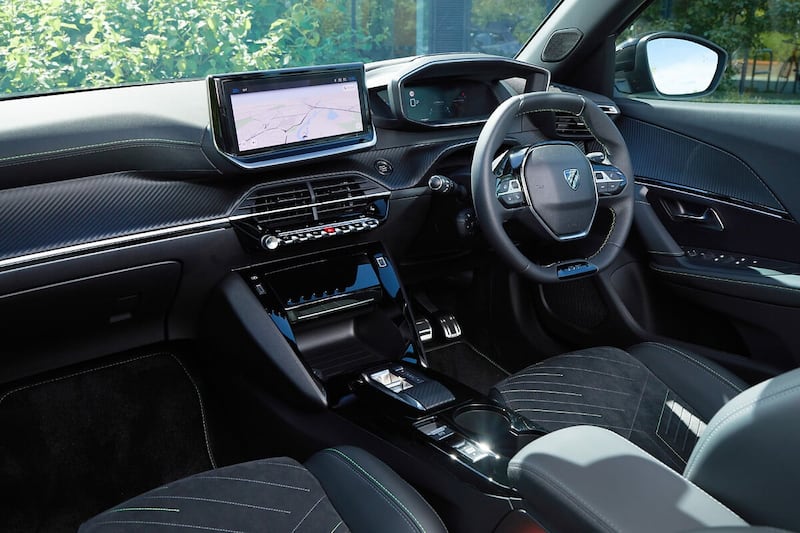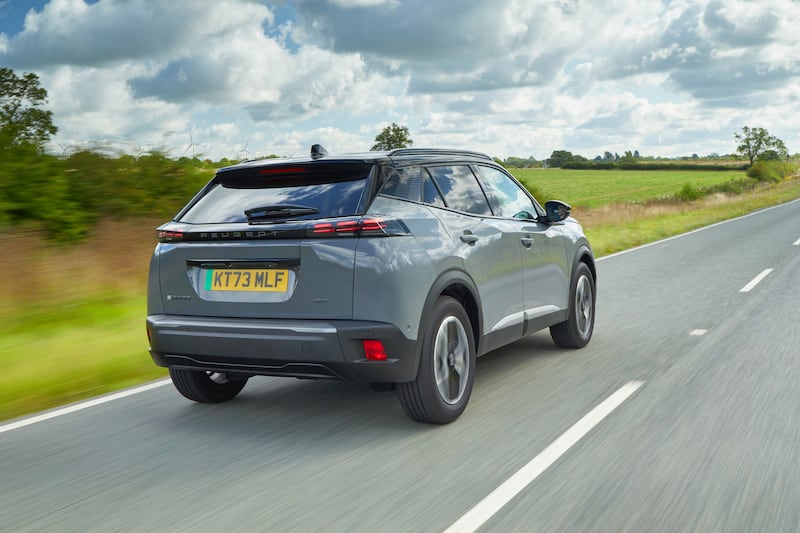It’s incredible how quickly we forget. Automatics are all the rage these days, accounting for 64 per cent of new car sales. Thanks to the popularity of hybrids and the advent of electric cars, the Irish motorist’s left foot has a lot less to do these days.
I’ve Peugeot to thank for reminding me what a joy a manual gearbox can be, when matched to a peppy petrol engine. Automatics are smooth, smart and easily deliver power, but the average mainstream automatic doesn’t give the driver the chance to take control. There are paddles and faux manual settings on many of them, but most work within set rev ranges. It’s nice to be back in full control with a manual box.
But first to the car at hand: the facelifted 2008.
[ Mercedes marks the end of an era with new diesel CLEOpens in new window ]
Peugeot is busy defining a post-SUV age, courtesy of impressive models like the 408. Its executives are also adamant that the future of the brand will also include hatchbacks, which is great news for those of us increasingly tired of the boxy SUV. But for the 2008, Peugeot is sticking to the market script.
The diminutive crossover is one of the French brand’s strongest sellers here, giving buyers that SUV sense and stance on the road, but still aligned to its fundamental roots as a beefed-up 208.
The changes to this latest iteration are hard to miss: Peugeot is going big and bold with its front nose these days, with a bold look for the new grille and the brand’s new trademark three-bar light signature with vertical LED strips. It’s meant to give the car some menace, but it looks like it got mauled by the angry lion that now features in the brand’s logo.
Inside and the cabin exudes the same level of quality that has won Peugeot many plaudits since it radically revamped its interior offerings seven years ago. This 2008 range comes with a driver-orientated 10-inch touchscreen along with digital dials for the driver as well, viewed over the top of the steering wheel. And it’s the steering wheel and those dials – called the i-cockpit – that remain a talking point several years after they were first rolled out.

There are some who complain that they can’t find the right driving position, either leaving the wheel obstructing the dials or sitting upright above the wheel. Personally, I am a fan of the small wheel set-up, as it gives the driver a greater sense of engagement with the car. Jumping out of the 2008 after a week and getting into an MG4, the latter hatchback felt like the steering wheel had been lifted from a HGV.
The 2008 cabin delivers admirable legroom for what’s billed as a small crossover, but the noticeable difference with this and the larger 3008 is in its width. The centre console is quite narrow and the two front-seat passengers sit quite close. In the back, the middle seat is definitely only for the most slender of passengers. If you are looking for a fully-fledged family car to allow for plenty of use of the back seats, the 3008 is a better option for the rear seat space.
Boot space is practical, but you lose space if you go for the EV.
For the EV, the gear stick is replaced with a toggle switch, typical of many other EVs out there, part of the click-and-go format future cars will encompass.
As with all EVs, it’s incredibly easy to drive, quiet in the cabin and decently quick, though it lacks the acceleration punch of many other EVs
If you do opt for EV, the claimed range is 406km, thanks to a few weight-savings in the newest version. In a cross-country trip we found that closer to 340km, with a consumption figure coming in at 15.6KWh/100km for most of our trips.
That’s decent for everyday driving, but it’s pipped by new rivals like the BYD Atto 3.
As with all EVs, it’s incredibly easy to drive, quiet in the cabin and decently quick, though it lacks the acceleration punch of many other EVs.
In comparison, the petrol version is as effortless to drive as the electric, but thanks to that manual gearbox is more engaging and though it’s not as fast on paper, its three-cylinder petrol engine brings out the fun in this Pug. It’s also notably cheaper. Prices start at €30,740 for the 1.2-litre petrol, or €35,610 for the 54kWh electric version.

After clocking up substantial mileage in both versions, my preference for driving pleasure would be the petrol version. It feels lighter, nimbler and more fun than the EV, along with being better priced. If your trips are merely short spurts around the suburbs and you want to embrace the leap to electric then the 2008 will not disappoint.
In a competitive market, the improvements made to the 2008 range should keep it on the shopping lists of many Irish buyers, particularly with the quality touches inside the cabin. But it’s going to encounter some sharp competition in the coming years, particularly with the arrival of €30,000 EVs from rival brands.
[ Renault revamps the Clio but is it better to wait for the new 5 EV?Opens in new window ]
Having a sprightly petrol option gives it something that many of its Chinese rivals won’t offer and that may prove useful in the coming years.
Lowdown: Peugeot 2008 1.2 Petrol
Power: 1199cc 3-cylinder turbo petrol engine putting out 101bhp and 151Nm of torque with a six-speed manual transmission and front-wheel drive.
Emissions: 127g/km
0-100km/h: 10.8 seconds
Prices: €30,740 for the petrol and €35,610 for EV
Verdict: A quality crossover with good looks – petrol version is the preferred choice













